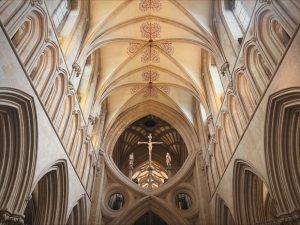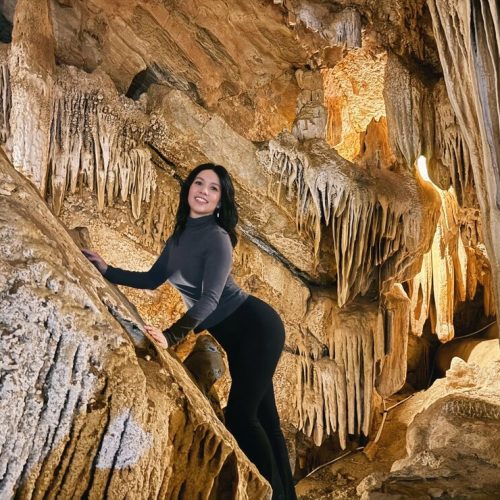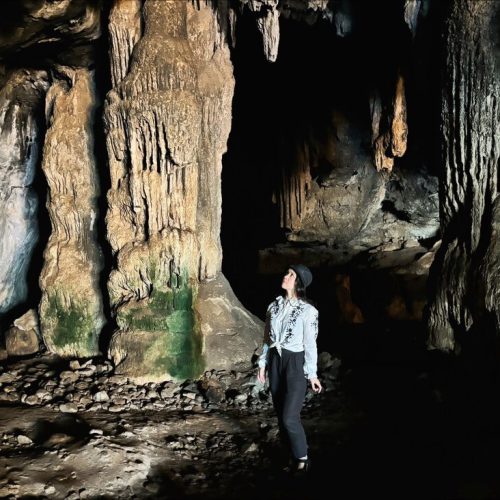
Art museums are often called stuffy. You have to be really quiet and it feels like someone is always watching you. As a result, they’re not exactly child-friendly.
I get it. Nobody wants a screaming child in a museum, least of all your own child. As one friend once said, “Taking your child to a museum is almost as bad as taking it screaming onto a plane.”
Children don’t yet understand the value of art and why everything inside a museum is protected by glass, alarms, or the watchful eye or a patrolling guard. Rather, they just want to touch, climb, or jump over everything like a climbing frame. They want to be kids.
So what do you do instead? You go to a sculpture park! Here, kids can run around without the worry of them breaking anything!
The ideal setting for seeing and experiencing art
Adults still get to admire the work of Henry Moore, while the little one can run around like a monkey, all the while hopefully developing their love for art.
With the abundance of art museums and galleries cropping up around the world, I’d love to see more art outdoors. I appreciate taking art outside is not easy nor cheap, but it’s still possible. Investing in sculpture parks benefits the whole of society.
The artist has to consider the impact that the weather will on the material. Getting it right can be costly, and then there’s the question of space.
Nonetheless, I’m still sure that I’m not the only person wishing art could be accessed more easily. It should be brought outside the confines of a museum more often that it currently is. After making my way through a fair few sculpture parks, I want to share them with you. Here’s my answer to any families looking for places to take their whole family.
Top sculpture parks in Europe
Boboli Gardens | Florence, Italy

There are hundreds of reasons why you should visit Florence, and Boboli Gardens is one of them. With rose gardens, panoramic views, and 16th and 17th century statues, this outdoor museum epitomises the image of a romantic garden dating back from the Renaissance period. I could spend all day in this park if the weather is nice.
Highlights include Neptune’s Fountain, the Little Bacchus Fountain, and a Tyndareus Cracked (1998) by Polish sculpture Igor Mitoraj (pictured above). Interestingly, Mitoraj studied painting under the great Tadeusz Kantor who I discovered during a visit to Krakow’s National Gallery.

Admiring the rotund belly of the “Little Bacchus” Fountain. Dwarves were considered lucky charms in the 15th and 16th Century. As a result, they often appeared in court and in the homes of the wealthy. Mostly famously, you will see this depicted in Velázquez’s famous painting Las Meninas.
Further reading: 8 Must-Visit Attractions in Florence
Yorkshire Sculpture Park | Wakefield, UK

Is this the best Sculpture Park in England? Definitely. All the great modern masters of giants sculpture can be found here; Antony Gormley, Barbara Hepworth, Henry Moore and Joan Miro to name only a few.
All works are set within a vast countryside setting where sheep and woodland creatures roam free. Yorkshire Sculpture Park combines my two favourite pastimes – countryside walking and searching for art. What’s not to love?
Further reading: A Trip to Yorkshire Sculpture Park
Vigeland Sculpture Park | Oslo

Vigeland Sculpture Park is recognised as being the world’s largest sculpture park created by a single artist. Impressively, Norwegian-born Gustav Vigeland single-handedly formed an entire world from his hands. The result is spectacular.
His prolific sculptures dominate the whole park. Two hundred sculptures made from granite, wrought iron, and bronze fill the unique skyline. Every sculpture expresses something different and meaningful. They are animated in such an elaborate way that all visitors to the park fail to resist replicating the sculptures themselves. It’s part of the fun!
Further reading: Norwegian Sky & Oslo Opera House


Final thoughts…
Sculpture parks bring art into the open, making it accessible to a broader audience who might not visit traditional galleries or museums. This openness encourages casual encounters with art, often sparking interest and curiosity.
By placing sculptures in outdoor settings, these parks foster a harmonious relationship between human creativity and the natural world. Visitors experience art in a dynamic environment where the changing light, weather, and seasons can add a new dimension.










2 responses
Hi, have you checked out Wanås Konst – a contemporary international Sculpture Park with a mission to produce and communicate art that makes a differece in society, a vison to reach many and be accessible to anyone regardless knowledge in art or not, ethnical background or nay disabilities. We have approx 50 works in the outdoor growing collection, new projects and programs every year, 5000 kids in different educational programs per year, a lunch café, a shop and deli and are heavliy engaged in sustainibility matters. Check us out! /Mattias (Director)
Hi Mattias, I’ve just had a look at Wanås via its website and think it looks great! It’s a place I would love to visit and will definitely keep it in mind for when I happen to be in Sweden next – (I just came back from Gothenburg a couple of weeks ago so it probably won’t be too soon unfortunately).
Thanks for sharing this Sculpture Park and it’s good to hear that sustainability plays a large part in its make-up. Wish I could go right now!